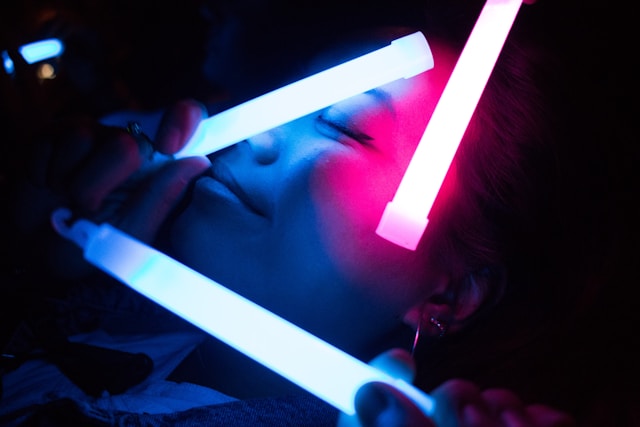Glow sticks are not just popular accessories for party-goers but also vital tools for enhancing visibility and safety in various environments. This article discusses the science behind glow sticks, their diverse applications, and important guidelines for their optimal and safe use.
The Chemical Reaction in Glow Sticks
The core function of glow sticks is based on chemiluminescence, a chemical reaction that produces light without heat. Inside a typical glow stick, two chemicals are separated: a solution of hydrogen peroxide and a mixture of phenyl oxalate ester with a fluorescent dye. When the stick is bent, an internal glass vial breaks, mixing these chemicals. This reaction excites the dye, causing it to emit a bright light. This self-contained light source is not only safe but also highly effective in providing illumination without any external power source.
Applications Across Different Fields
While many associate glow sticks with recreational use at concerts and parties, they are equally important in practical scenarios:
- Emergency Services: Glow sticks are used by emergency responders to light areas where electricity may not be available or safe, such as in the aftermath of natural disasters or in confined spaces.
- Outdoor Adventures: Hikers and campers often use glow sticks for nighttime navigation or as markers to trace their paths back in low-light conditions.
- Event Organization: They are also used in event management to mark pathways or emergency exits and to help manage large crowds in dimly lit conditions.
Safety and Usage Tips
To maximize the benefits of glow sticks and ensure safety, users should adhere to the following tips:
- Do Not Break or Cut Open: Avoid intentionally breaking or cutting the outer plastic of the glow stick, as the chemicals inside, while not highly toxic, can irritate the skin and eyes.
- Store Appropriately: Glow sticks should be stored in a cool, dry place to prevent premature activation. Excessive heat or cold can alter the effectiveness and lifespan of the chemical reaction.
- Proper Disposal: After use, dispose of glow sticks in standard household waste. Due to their chemical components and plastic housing, they are not recyclable and should be disposed of responsibly.
Conclusion
Glow sticks are a unique blend of science and practicality, serving a wide range of purposes from entertainment to critical safety applications. Understanding how they work and the best practices for their use can help individuals and organizations effectively leverage this technology to enhance visibility and safety wherever needed. By respecting their usage guidelines and disposal recommendations, we can enjoy the benefits of glow sticks while minimizing potential risks and environmental impact.

